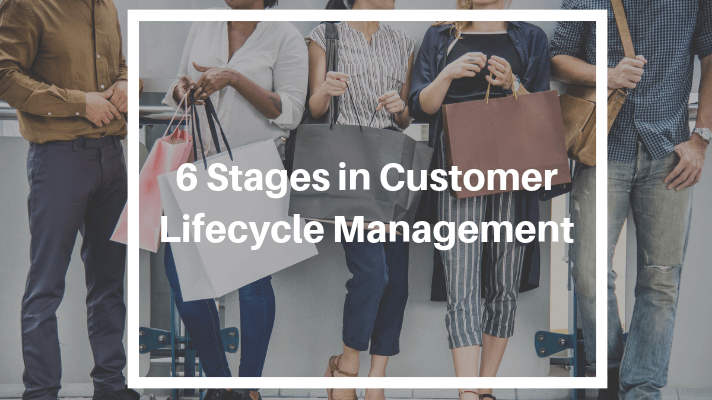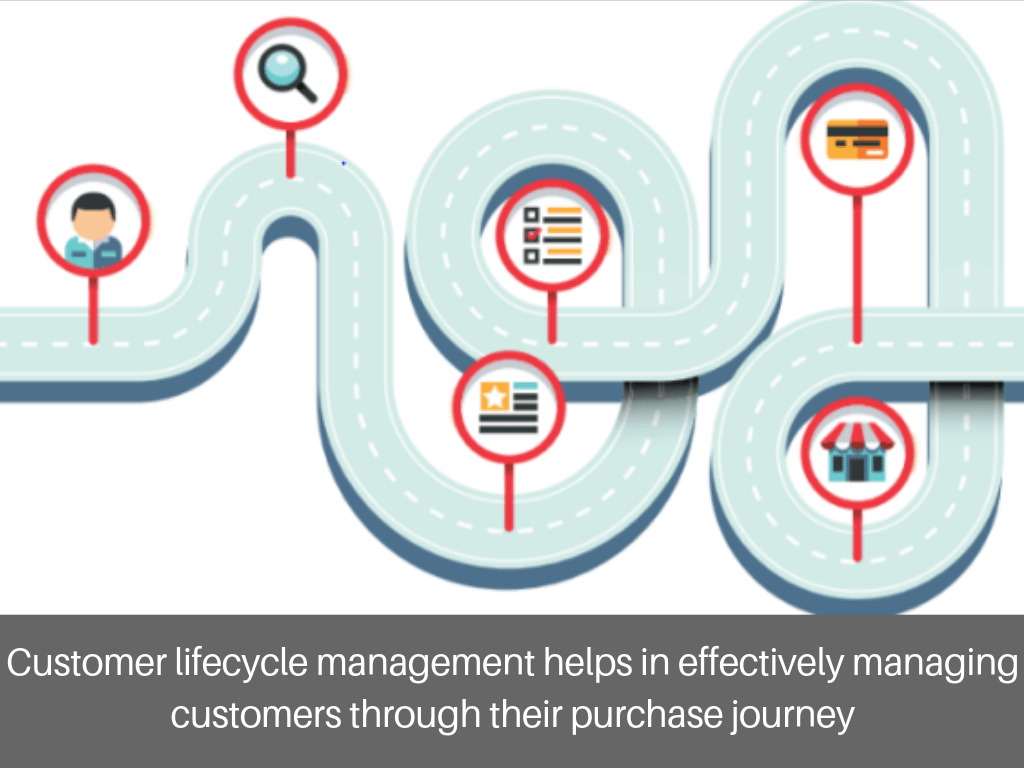
6 Stages in Customer Lifecycle Management
Customer lifecycle management is a technique essential for every business for its sustainability. It helps in efficiently managing your customers throughout their purchase journey.
Customer lifecycle management has become a key differentiator for brands today. Knowing their customer need better would yield a competitive advantage for brands.

Organizations are continually trying out innovative means to boost customer experience. The main aim of customer lifecycle management is to deliver exceptional customer experience.
Stages in Customer Lifecycle Management
Let’s explore the Six main stages in Customer Lifecycle Management.
Audience Reach
Build awareness through relevant marketing content and speak to the right audience.
Reach is the stage where the prospects/visitors interact with their brand for the first time. If you strike a chord with your prospects right here, there is a high chance of winning them.
Ensure your website, social pages, email campaigns, etc., contains consistent messaging that excite your target audience.
For instance, Let’s assume Nissan is running a campaign for their 2019 launch of Nissan Patrol.
The marketing efforts by the brand across social media, email, etc., must follow its brand identity and uniform messaging style. The website/landing page too must reflect the same look and feel.
Doing so would help the customers/prospects engage with the brand more intensively. As they are already aware of the brand identity, there is always a higher chance of relevant engagement.
Acquire Customers
Understand customer behavior and offer solutions that solve customer requirements. It will increase conversion.
Market survey, customer feedback, customer satisfaction levels, etc., are few ways to determine customer’s unmet needs.
Building strategies to solve this requirement will result in high customer acquisition.
Customer survey would provide insights into customer buying habits. It will help in creating benefit-based communications to the diverse audience base.
As a result, more prospects would find value in the brand’s proposition. They would sign-up for availing your product/service.
Develop/Nurture Customers
Continue the relation with your first-time buyers. It will boost engagement and customer satisfaction.
Nurture your first-time buyers with product updates and recommendations. Engage them to stay with your brand by providing exclusive promotions and special offers. Trigger them for the next purchase.
Customer profiling is essential before you step into nurturing your existing customers. Understand the customer journey to identify where are the drop-offs are. Channel your marketing efforts to tap the gaps.
Customer nurturing involves building a long -term relationship with the customer. Leverage marketing tools like customer segmentation to identify the right customer profile. Incentive them for every purchase. Nurture them with the right communication as they progress through their purchase journey.
Customer Connect
Use of analytics comes handy here. Predict the needs of your customer based on their previous purchase. Send them personalized marketing communication. Conduct regular customer surveys to understand customer behavior and tailor the services accordingly.
To build a special rapport with your audience, learn everything about them. Gather customer information through research, social media, email surveys, CRM logs, etc. Interact with the customers in real-time using automated marketing solutions.

CRM based automated email marketing allows you to store customer information. It can also trigger communication-based on customer actions like downloading white-paper, signing up for a free service, etc. It would result in a more personalized and focused communication with your prospects.
Customer Retention
Maintaining a continuous engagement with repeat customers will enhance retention rate. Surveys, feedbacks, etc., would boost customer engagement as it captures the customer’s voice.
Brands must channel their marketing efforts based on customer feedback. It would build confidence among the customers.
82% of the companies agree that retention is cheaper than acquisition – Direct Marketing Institute
Customer retention could increase your profit margin too. Increasing customer retention rates by just 5% increase the profits by anything from 25%-95%.
Execution is the key to customer retention. Few of the top customer retention techniques are social media-based customer service, content marketing, automated email marketing, etc.
Stay tuned for our next blog on customer retention techniques. It helps you in framing a robust customer retention strategy for your brand.
Brand Advocacy
As you succeed in customer retention, customers will become your brand advocates. They will recommend your products to friends and family. Brands must try to reach this stage to win the game.
Brand advocacy and customer loyalty is the end goal for customer lifecycle management. But you cannot say it as the last step in the purchase journey. Customer lifecycle management is a cycle.
Brands that attain the advocacy stage must focus on further brand awareness efforts. They must reach out to a new audience and grow business value to sustain in the market.
Customer lifecycle management helps in successfully executing your customer engagement efforts. It helps in structuring your marketing efforts by knowing your customer needs, targeting the right audience and deliver exceptional customer experience.
Stay tuned for our next blog on the tools & techniques in customer lifecycle management.
Interested in exploring similar topics, log on to our insights page

